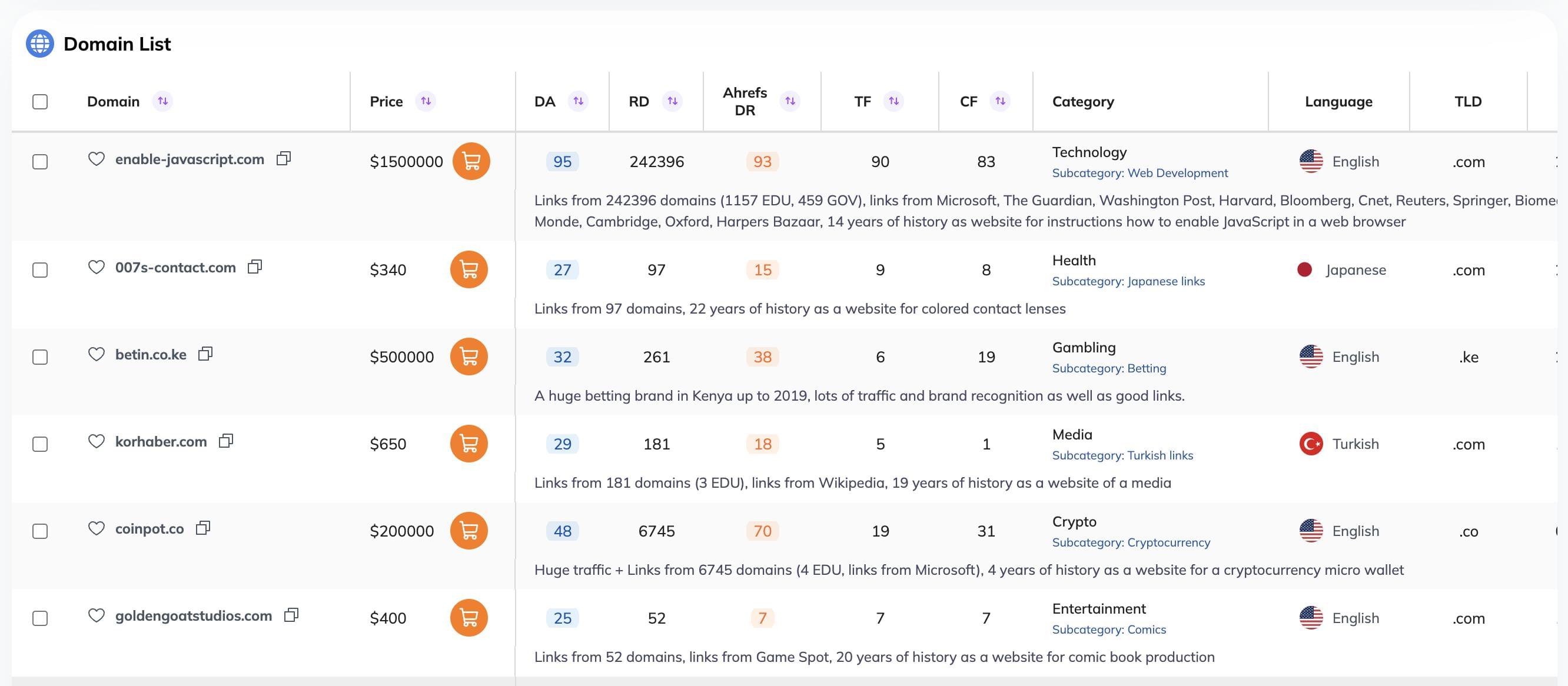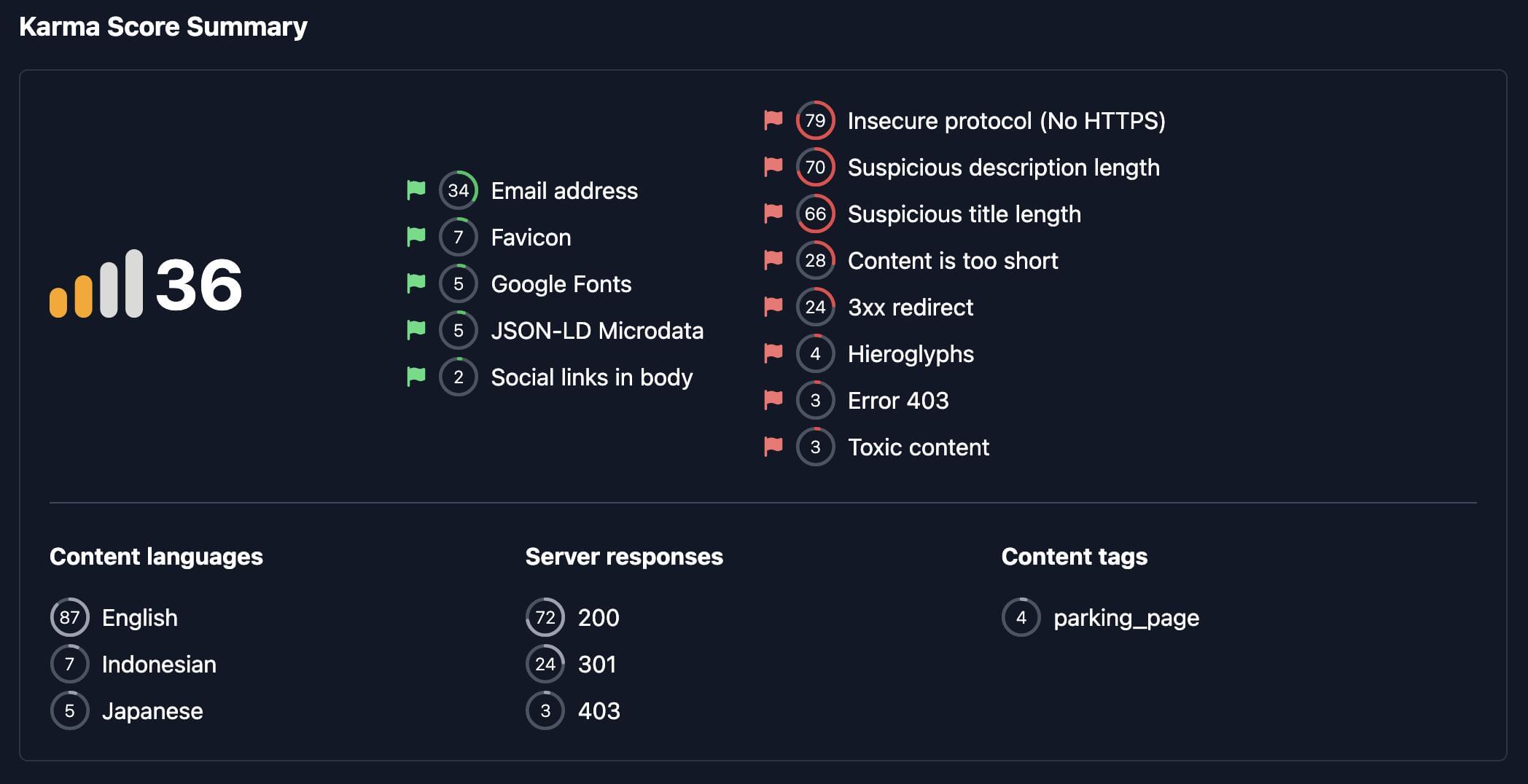SEO.Domains is a marketplace of ready-to-buy domains with fixed prices, while Karma.Domains is an aggregator and analytical tool that helps you find the optimal domain across numerous auctions and drop lists with deep, content-level historical analysis. Below is a detailed comparison of both platforms.
Table of Contents
- Table of Contents
- Karma.Domains vs SEO.Domains — Feature comparison
- Advantages of SEO.Domains for quick purchase
- Key features of Karma.Domains for domain analysis
- Pricing models
- FAQ
- Conclusion
Finding a high-quality domain with a clean history requires a systematic approach and comprehensive analysis. A common pitfall when choosing domains is focusing solely on external metrics without examining the actual content that was hosted on the site in the past. This can lead to unpleasant surprises such as hidden redirects, spammy content, or a complete change of topic. Content expertise of archived data becomes a key factor when deciding whether to purchase a domain. SEO.Domains and Karma.Domains use fundamentally different approaches to this task.
Karma.Domains vs SEO.Domains — Feature comparison
| ⚙️ Feature | Karma.Domains | SEO.Domains |
|---|---|---|
| 🧠 Content analysis (Wayback Machine) | ✅ Full-text snapshot parsing: language/topic, redirects, toxic themes; shows only unique versions | ⚠️ Focus on metric cards and manual selection; no public search over archival content |
| 📊 Quality scoring system | ✅ Karma Score with detailed indicators and explanations of scoring factors | ⚠️ No integral explainable scoring; uses aggregate DR/DA/TF/CF |
| 🌎 Domain sources | ✅ Aggregates auctions and drop lists (GoDaddy, DropCatch, NameJet, Sedo, Dynadot, Namesilo, etc.) | ⚠️ Seller’s own inventory (dropcatch/purchases); selection limited to the storefront |
| 🧪 Content filters (Wayback Machine) | ✅ Keywords in content, language, archive age, number of changes, CJK, 301/302, 403 | ❌ No content search |
| 🔗 Backlink filters/metrics | ✅ SEMrush/Majestic: Ref. Domains, anchors, URLs; search by anchors and organic keywords | ✅ DR/DA, TF/CF and Ref. Domains in domain cards |
| 🧰 Additional tools | ✅ Radar (filter out growing “live” sites), Afterlife (new sites on auction drops), Bulk history | ⚠️ Focus on storefront: domain purchase and related services |
| 🔔 Alerts | ✅ RSS + email for saved presets | ⚠️ No RSS; main flow — browsing the storefront/working via account manager |
| 🌍 TLD coverage | ✅ Dozens of ccTLD/gTLD via sources | ✅ 150+ TLDs in the seller’s portfolio |
| 💾 “Register now” | ✅ Expired section: domains ready for immediate registration | ✅ “Buy now” store model with fixed prices |
| 🪪 Registrar status | ⚠️ Not a registrar (an analyzer/aggregator) | ✅ ICANN-accredited registrar (fast transfer) |
| 📈 Interface and reports | ✅ Filter-first, Wayback Machine reports: meta tags, keyword clouds, external/internal links, technology ID | ⚠️ Metric cards; content history must be verified separately |
| 💰 Pricing | ✅ $27.99/30 days (up to 400 tasks) or credits with no expiry | 💵 Fixed prices per domain (often positioned below auctions) |
Advantages of SEO.Domains for quick purchase
SEO.Domains is optimal when you need to quickly acquire a domain: the platform offers a ready-made storefront with filtering by TLD and metrics, fixed price purchases, and fast transfer to the buyer’s account thanks to its ICANN-accredited registrar status. This is especially effective for niche markets and local domain zones where there is broad ccTLD coverage.

Limitations of this approach: the choice is limited by the available inventory. Also, metric cards do not replace a comprehensive content audit — analyzing the site’s history requires additional checks.
Key features of Karma.Domains for domain analysis
1) Content-oriented history analysis
The platform shows only unique Wayback Machine snapshots, excluding duplicates. This makes it easy to quickly detect topic/language changes, long-term 301/302 redirects, 403 blocks, and the appearance of problematic content, significantly saving analysis time.
2) Karma Score with transparent methodology
The scoring system provides detailed indicators with an explanation of each factor. Red and green flags with reasons help you quickly identify problematic domains and simplify team decision-making.

3) Search through archived content
The ability to search by keywords and language in real archived page content makes it possible to find domains with relevant thematic history. After the initial selection, you can further apply TF/Ref. Domains thresholds and analyze the anchor profile.
4) Additional analytical tools
- Radar — exclude active sites from results to avoid conflicts with ongoing projects.
- Afterlife — monitor new sites on recently expired domains to track niche changes.
- User Tasks — bulk analysis of a user’s domain list with summary reports.
Pricing models
SEO.Domains uses fixed pricing per domain, often positioned below auction levels. Suitable for one-off purchases with immediate acquisition.
Karma.Domains offers a subscription-based access to analytics: $27.99 for 30 days (includes all reports, up to 400 analyses) or a credit system with no time limits — optimal for periodic search and comparison of offers from various sources before buying.
FAQ
Is SEO.Domains an auction?
No. It’s a store of its own domains with fixed prices and fast transfer (they are an ICANN-accredited registrar).
Need a domain in a rare local TLD — where to go?
If you need “buy now,” start with SEO.Domains: they have good ccTLD coverage. If you want to compare and save — in parallel, gather options through the aggregator in Karma.Domains.
Does Karma Score really help?
Yes. It doesn’t replace your judgment, but it quickly shows where the domain has issues: doorway pages, topic/language shifts, 301/403, archive anomalies.
Can I search by niche keywords in Karma.Domains?
Yes, directly in the content of old pages in the Wayback Machine, with language and archive age filters — this is the main advantage for thematic relevance.
How not to overconstrain the filters?
Remember: in Karma.Domains, filters work using logical AND. Start with 1–2 conditions, then add one by one — that way you won’t “kill” the results.
Where to check donors and anchors?
A quick overview — in SEMrush/Majestic. In Karma.Domains, set initial thresholds and use anchors/URLs in filters, then confirm manually in your preferred SEO tool.
Conclusion
For instant acquisition of a ready domain, the optimal solution is SEO.Domains: fixed prices, fast transfer, broad coverage of domain zones.
For deep analysis of a domain’s history and content-oriented search, we recommend Karma.Domains: comprehensive Wayback Machine analytics, transparent Karma Score, search through archived content, RSS notifications, and aggregation of multiple sources.
The optimal strategy assumes a combined approach: Karma.Domains — for in-depth analysis and risk assessment, SEO.Domains — for fast acquisition. This ensures efficient use of budget and time while minimizing risks.